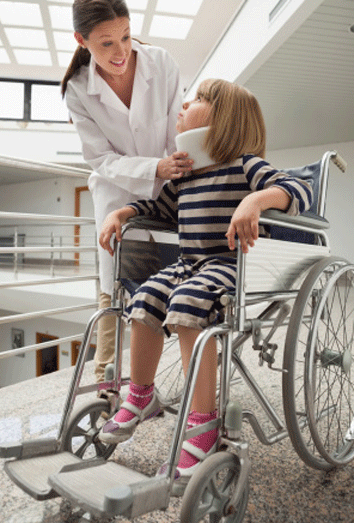November 21 has been marked on the calendar as International Spina Bifida Day. The objectives of this day are fundamentally twofold: on the one hand, to make public institutions aware of the need for aid to improve the quality of patients affected by this congenital disease and, on the other hand, to call attention to the female population of the importance of prevention during pregnancy to reduce cases.

How Spina Bifida Affects
- Spina Bifida is a genetic malformation that causes severe disability. It is a failure in the closure of the neural tube during the first month of pregnancy that directly affects the spine and, in any case, is permanent and irreversible damage. The damage varies from one case to another, but generally Spina Bifida also presents hydrocephalus, intestinal problems, loss of sensitivity in the lower extremities and different degrees of paralysis.
- Although the causes of this malformation are unknown, the general medical opinion is that it is a combination of genetic and environmental factors. Hence the importance of prevention during pregnancy. It has been shown that taking folic acid in the months prior to pregnancy, and especially in the first month of pregnancy, considerably reduces cases of Spina Bifida.
- Until a few years ago, children born with Spina Bifida had little chance of surviving, but today, thanks to medical advances and the involvement of society in this problem, the person affected by this disease can have a quality of acceptable life, although there is still much to be done in this regard.
Spina Bifida Treatment
- As it is an irreversible disease, the main objective of the treatments for Spina Bifida is to prevent the appearance of further damage and to preserve the spinal cord from other external aggressions. Generally, a surgical intervention will be necessary to close the lesion produced in the spinal cord, a treatment for hydrocephalus, orthopedic help and the appropriate measures to stop intestinal and incontinence problems.
- But the pillar of any treatment for Spina Bifida that guarantees the patient a better quality of life is rehabilitation. Through rehabilitation, both intellectually and physically, it is possible for the person affected by Spina Bifida to reach a high degree of autonomy, developing their mental and mobility capacities to the maximum.
- Depending on the degree of the injury produced by Spina Bifida, the treatment will be directed to the specific needs. In any case, medical, family and social support is necessary to be aware of both the abilities and the limitations of the affected person and, taking this into account, promote their integration into the community. In this way, and with the involvement of all sectors of society, we can help to considerably improve the quality of life of people with Spina Bifida.
